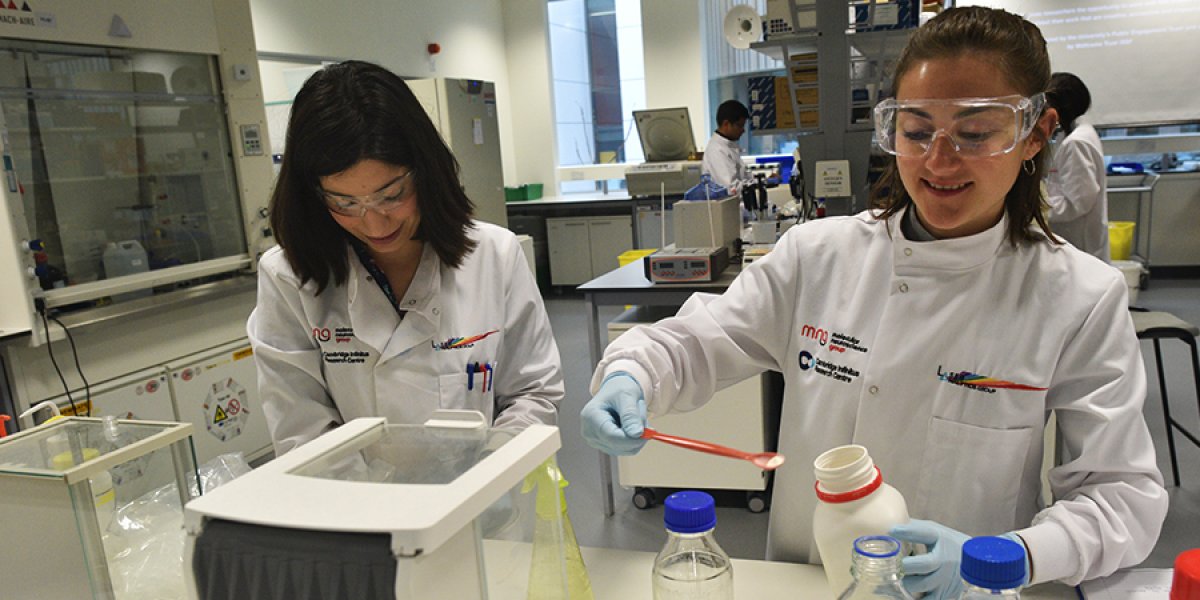Photography by Phil Mynott
New home for Department of Chemical Engineering and Biotechnology officially opened
The new building is the first of its kind to house the whole cycle of scientific investigation in chemical engineering and biotechnology, and its teaching and commercialisation, under one roof: from fundamental research right through to technology innovation, development and spin-out.
The Department of Chemical Engineering and Biotechnology was formed in 2008 by the merger of Chemical Engineering with the former Institute of Biotechnology. The Department works at the interfaces between engineering, chemistry, biology and physics. Its scientists work together with industry leaders and entrepreneurs at the interfaces of these science disciplines to develop innovative solutions to a range of global challenges: from finding new ways to create sustainable energies and conserve the environment to developing innovative healthcare technologies to diagnose and combat disease.
“We create a unique multidisciplinary research environment within the University, in which collaborations with academic and industrial organisations flourish,” said Professor John Dennis, Head of Department.
In this new home the Department draws together expertise that bridges traditional boundaries of chemical engineering and biotechnology.
“It is also the home of a Department which has an outstanding track record of innovation. Its research spans from artificial heart valves to affordable disease diagnostic tools. Partnerships are the key: with entrepreneurs and companies around our city; with health partners near and far; with non-governmental organisations and institutes across the globe," said the Chancellor in his remarks.
The opening ceremony, on 24 April 2018, was followed by tours of the new building, demonstrations of some of the Department’s world-leading research, and overviews of its teaching and learning activities.
The construction of the building was supported by donations from the Wolfson Foundation, Infinitus (China) Company Ltd, Johnson Matthey Plc, the Garfield Weston Foundation, Dr Robin Paul, and the Gillham Charitable Trust.
The building was designed by BDP architects, with a project team that includes Ramboll UK as civil and structural engineers and Hoare Lea as services engineers. It features a wide range of biological laboratories to Bio Safety Levels Two and Three, cleanrooms, sensitive laser, optics and imaging laboratories, a Magnetic Resonance Research Centre, materials and processes laboratories and an undergraduate teaching laboratory. The teaching facilities support these laboratories through dedicated spaces that include two 120-seat lecture theatres, a postgraduate open plan researcher write-up space, and academic and administrative offices.
